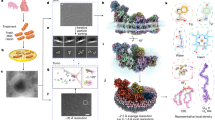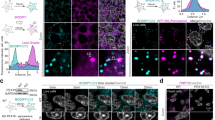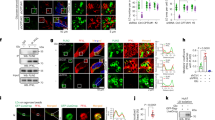Abstract
ALDOLASE is known to catalyse its own inactivation in the presence of substrate and electron acceptors1. The underlying mechanism is that in the presence of electron acceptors aldolase catalyses the oxidation of dihydroxyacetone phosphate to hydroxypyruvaldehyde phosphate2,3 and this highly reactive nascent α-dicarbonyl reacts in situ with an active-centre residue4. Inactivation of aldolase is entirely due to reaction in situ of nascent hydroxypyruvaldehyde phosphate, for hydration and dilution of released hydroxypyruvaldehyde phosphate practically abolishes its contribution to inactivation4. As the inactivating agent loses reactivity on diffusion into solvent4, its action is restricted to the enzyme molecule that has produced it; other molecules of aldolase or other enzymes (transaldolase, transketolase) are not inactivated by aldolase-generated reagent1. We report here that oxidative cycles of aldolase cause the inactivation of glyceraldehyde-3-phosphate dehydrogenase (GAPD), suggesting a direct transfer of the inactivating agent between the two enzymes. Kinetic evidence for an interaction between aldolase and GAPD has been presented5.
This is a preview of subscription content, access via your institution
Access options
Subscribe to this journal
Receive 51 print issues and online access
$199.00 per year
only $3.90 per issue
Buy this article
- Purchase on Springer Link
- Instant access to full article PDF
Prices may be subject to local taxes which are calculated during checkout
Similar content being viewed by others
References
Christen, P., Cogoli-Greuter, M., Healy, M. J. & Lubini, D. Eur. J. Biochem. 63, 223–231 (1976).
Healy, M. J. & Christen, P. Biochemistry 12, 35–41 (1973).
Healy, M. J. & Christen, P. J. Am. chem. Soc. 94, 7911–7916 (1972).
Patthy, L. Eur. J. Biochem. 88, 191–196 (1978).
Ovádi, J. & Keleti, T. Eur. J. Biochem. 85, 157–161 (1978).
Wold, F. Meth. Enzym. 46, 3–14 (1977).
Erecinska, M., Vanderkooi, J. M. & Wilson, D. F. Archs Biochem. Biophys. 171, 108–116 (1975).
Birchmeier, W., Kohler, C. E. & Schatz, G. Proc. natn. Acad. Sci. U.S.A. 73, 4334–4338 (1976).
Bisson, R. et al. J. biol. Chem. 253, 1874–1880 (1978).
Hexter, C. S. & Westheimer, F. H. J. biol. Chem. 246, 3928–3933 (1971).
Author information
Authors and Affiliations
Rights and permissions
About this article
Cite this article
PATTHY, L., VAS, M. Aldolase-catalysed inactivation of glyceraldehyde-3-phosphate dehydrogenase. Nature 276, 94–95 (1978). https://doi.org/10.1038/276094a0
Received:
Accepted:
Issue Date:
DOI: https://doi.org/10.1038/276094a0
Comments
By submitting a comment you agree to abide by our Terms and Community Guidelines. If you find something abusive or that does not comply with our terms or guidelines please flag it as inappropriate.



